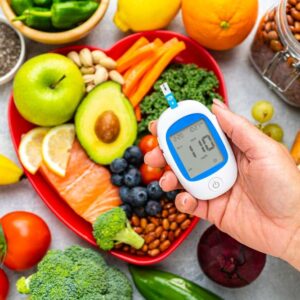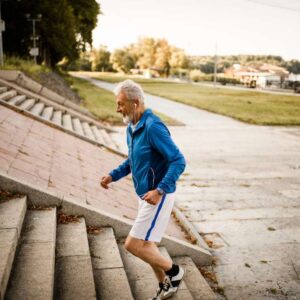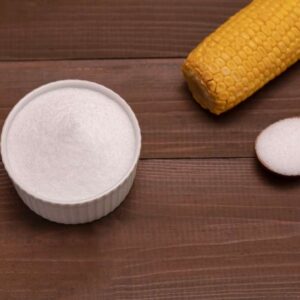
The DEA Wants You to Take Dangerous Drugs
Dear Living Well Daily Reader,
“It was just too hard for him to give it up — he was truly addicted. It’s a shame that something as tiny as a pill could be powerful enough to make him lose his job, break the law, and put him in a grave.”
For 10 years, I worked with patients who had serious chronic pain issues. And it was undoubtedly the most difficult and emotionally taxing job I’ve ever had.
Watching people suffering is hard. And watching some patients quickly become dependent on the medications their doctors were all too willing to give them was heartbreaking.
But even more gut wrenching — trying to help them come off of these life-destroying pain pills.
In fact, one of my most frequent patients was a former firefighter (we call “tom”) who was injured on the job. When he was sent to a pain management doctor, he was given morphine, oxycodone, and fentanyl — all drugs with the same active ingredient as heroin and just as addictive.
Within three months of “pain management“ treatment, Tom had become so addicted he had pawned several personal items (including his wedding ring), was getting pain prescriptions from five different doctors and was also buying pills off the street.
After a year spent shopping for pain doctors and taking street drugs like heroin, a few stints in jail for possession of a controlled substance and 17 failed detox admissions, Tom finally died from an accidental overdose of pain medication. The opening of this article are the words his wife told me when she called to notify me of his death.
While Tom’s case may seem extreme, sadly, it’s not exactly rare.
Personally, I saw hundreds of patients every month that were either seeking help for their pain medication addiction, or seeking the medication itself.
And since 1.9 million Americans have a substance abuse disorder involving prescription painkillers, cases like Tom’s can be found at just about any hospital in the country.
But the real shame here is it doesn’t have to be this way.
You see, recent research shows that there’s an all-natural pain killer that might be just as effective against pain as opioids, but without the addictive dangers.
But don’t get too excited.
As early as today, the DEA could ban kratom.
![]() Natural, Nonaddictive and Now Illegal
Natural, Nonaddictive and Now Illegal
Kratom, a tree found in Southeast Asia, is the natural painkiller that’s the subject of both promising pain research and the DEA’s scrutiny.
Kratom leaves can be chewed, taken as a pill or made into a tea. Once taken it gives a bit of a caffeine-like bursts of energy but can also be used for a variety of common ailments like pain or diarrhea.
In 1943, Thailand criminalized kratom because they believed it had addictive properties. But according to some studies, this simply isn’t true. While suddenly stopping the use kratom may lead to mild withdrawal symptoms, they are milder than those typical of commonly prescribed opioids.
After closer research, scientists have found that the active compounds in kratom can relieve pain by activating parts of the brain that are key to pain relief. However, unlike prescription opioids, kratom doesn’t activate parts of the brain that lead to physical addiction.
Because of this compound’s powerful ability to fight pain with almost no risk of addiction, some pharmaceutical companies, like Trevena, have begun researching kratom for future drugs. Trevena has one such drug currently in clinical trials.
In addition, a compound found in fermented kratom called mitragynine pseudoindoxyl has shown the potential to reduce opioid tolerance and withdrawal symptoms in mice.
In a recent study, researchers injected mice with mitragynine pseudoindoxyl twice a day for a month. They then evaluated the mice’s ability to feel pain. Over the course of these experiments, morphine’s pain-blocking effects dwindled after five days. Incredibly, though, after 30 days of mitragynine pseudoindoxyl use, the mice were still resistant to pain.
And even more remarkable — the mice showed few withdrawal symptoms and had no signs of gaining pleasure from taking the drug.
This means compounds in kratom are both more effective on pain and less addictive than dangerous opiate-based drugs. Plus kratom isn’t associated with the respiratory issues associated with prescription pain pills that can cause deaths like Toms.
Andrew Kruegel, a Columbia University pharmacologist, reports on kratom’s potential as a safe painkiller: “[Kratom] compounds alone may already be superior to codeine and oxycodone. At a minimum, if you can get rid of respiratory [problems] then you can save thousands of lives.”
But this is only possible if the research is able to legally continue.
![]() Don’t Let the DEA Dictate Your Health
Don’t Let the DEA Dictate Your Health
The DEA will add kratom to its list of Schedule I drugs as early as today.
According to the agency’s standards, kratom is as dangerous and addictive as heroin, has a high potential for abuse and has zero medical use.
If this is true, why are opioid pain medications, which are essentially synthetic heroin, considered safe?
Opioids are responsible for the deaths of nearly 20,000 Americans every single year, while kratom is linked only to 15 deaths in the last two years, 14 of which likely involved other drugs.
This means that DEA-approved opioid-based painkillers could be 20,000 time more likely to kill you than kratom. If you ask me, the real danger here is with an agency willing to discount the medicinal powers of a natural and safe substance.
Essentially, the DEA is encouraging you to take dangerous drugs.
Since the DEA refuses to protect you from deadly painkillers, it’s up to you to advocate for your own health.
Pain is real. And it’s one of the hardest conditions on the planet to treat. So don’t be afraid to ask questions about your pain treatment.
When a doctor give you a script for pain relief, let them know your concerns about opioids. You can always request an alternative medication or request the lowest possible dose if you do have to take an opioid.
Another way to find natural relief is to call your insurance company. Find out if you have coverage for alternative types of pain relief like physical therapy, acupuncture, chiropractic care or massage therapy.
Lastly, refuse to be immediately referred to a “pain management” doctor. Find out why you’re being sent there, and demand to know your other options. Your doctor may not like all of the questions, but asking them might just save your life.
Live well,

Natalie Moore
Managing editor, Living Well Daily
Sources
[1] Opioid Addiction 2016 Facts & Figures
[2] Kratom Drug Ban May Cripple Promising Painkiller Research
[3] Kratom, a dangerous drug or harmless home remedy?
Written By Natalie Moore
Natalie Moore is a dedicated health researcher with a passion for finding healthy, natural, and science-based solutions. After a decade of direct healthcare experience in western and natural medicine, she was involved in public health research before joining Living Well Daily.
View More Free Articles
This Sleep Mistake Is Doubling Your Disease Risk
Think your inconsistent bedtime is just a harmless habit? Think again. New research reveals that going to bed at different times each night isn’t just making you tired—it could be dramatically increasing your risk of serious diseases. But the key to making sure poor sleep doesn’t derail your health goals likely isn’t what you think…....
Stop Obsessing Over Diet Trends
Can we stop with the endless diet debates already? Every other week there’s a new headline shouting about which diet is best for weight loss, heart health, or diabetes. Paleo, keto, low-carb, high-protein… it’s exhausting. And now, a new meta-analysis is out comparing the Mediterranean diet, the DASH diet, and something called AHEI (that’s “Alternative...
A New Reason to Ditch Processed Junk
If you’ve ever walked the inside aisles of your local grocery store and thought, “This is all just junk,” your instincts were spot on. A new study published in the journal Thorax just added another red flag to the list of dangers linked to ultra-processed food—a 41 percent higher risk of lung cancer. That’s right....
When Being Winded on Stairs Is Serious (And When It Isn’t)
I had an athlete visit me recently because he experienced shortness of breath while climbing stairs. He is in great shape, so he was worried about what it might mean. “Doc,” he said, “I run five miles three times a week. Why am I huffing and puffing after two flights of stairs?” His concern is...
Study EXPOSES Hidden Danger Lurking in Your Car
We think of our homes and cars as safe havens. But according to a startling new study, they may be flooding your lungs with microscopic plastic particles—every single day. Researchers in France recently found that adults inhale an average of 68,000 microplastic particles daily from indoor air alone. To put that in perspective, that’s about...
Mailbag: Is Modern Food Making You Snore?
“What can cause snoring, and is there a way to correct this issue?” —Seeking Silence Hi Seeking, Snoring happens when the soft tissues in your throat relax and vibrate as air passes through during sleep. While several factors can cause snoring—from sleep position to nasal congestion—I want to share one trigger that might surprise you....
Simple Food Swap SLASHES Dementia Risk 28%
Let’s be honest… who would jump at the chance to cut their dementia risk by 28 percent. And no, you don’t need to run marathons, survive on broccoli, or learn to play the zither (whatever that is) to make it happen. All it takes is one easy swap—something that’s probably already in your refrigerator. Researchers...
This SMART Floss Exposes Hidden Health Danger
Scientists have created dental floss that doesn’t just clean between your teeth—it also tracks your stress while you’re flossing. Now, I know what you’re thinking… “Great—now even flossing is going to stress me out by telling me how stressed I am.” But this fascinating new tool from Tufts University could be a game-changer for understanding...
Is This "Safe" Sweetener Damaging Your Brain?
The headlines are alarming… “Popular Sugar Substitute Linked to Brain Cell Damage” and “Erythritol Could Damage Critical Brain Barrier” are just two of the dozens I’ve spotted recently. But before you toss every sugar-free product in your pantry, let’s take a closer look at what this study actually shows—and what it doesn’t. The latest research...
This Summer Threat Could SPIKE Your Blood Sugar
Picture this… It’s another scorching hot summer day. You crank up the air conditioning while watching the weather forecast, which predicts yet another “record-breaking” heat wave. It’s starting to feel like just another miserably uncomfortable summer. But what you might not realize is that—if you have diabetes—those rising temps could do far more damage to...









